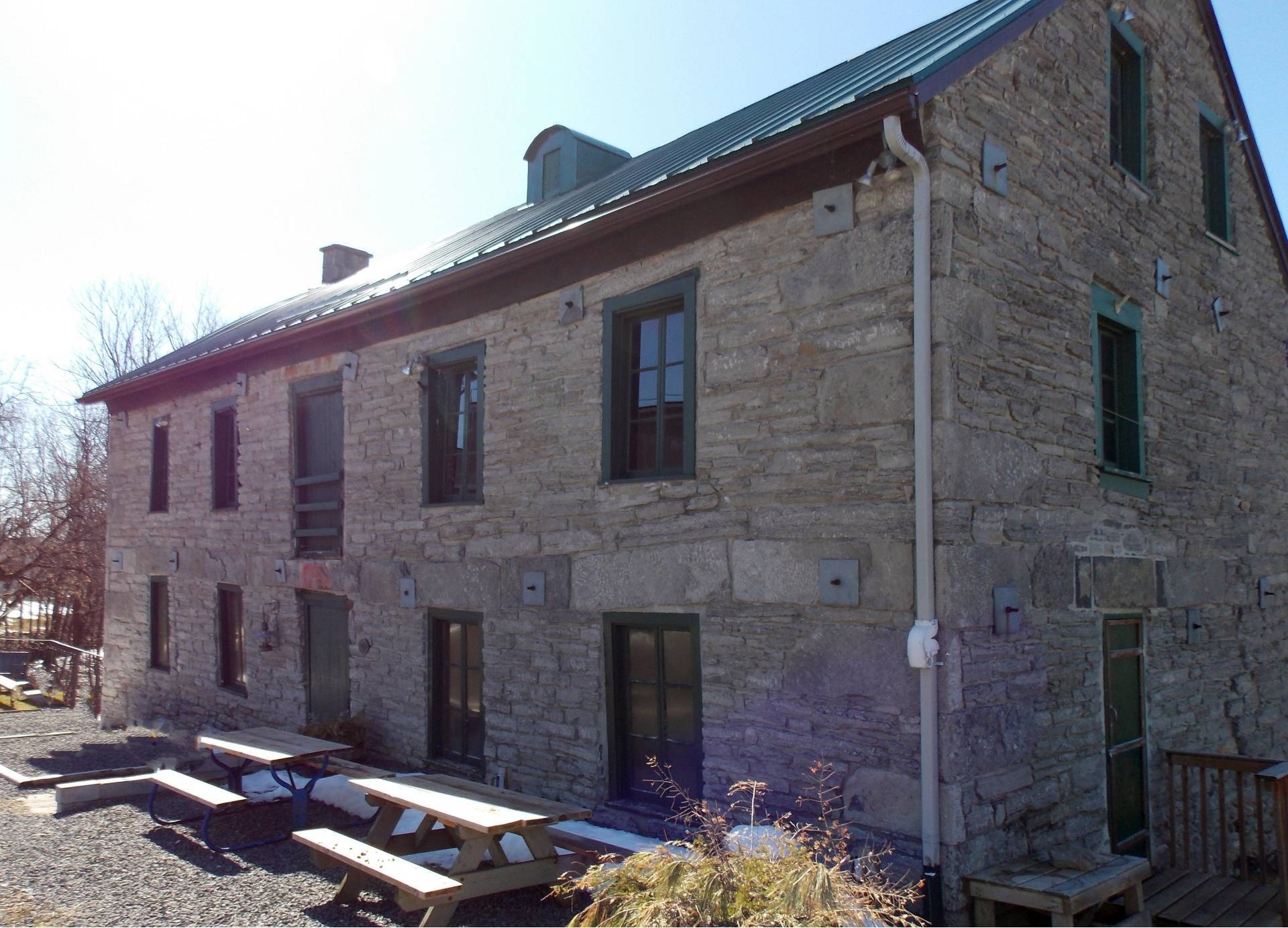
Then & Now: Preserving History – The Martintown Mill
Located in SDG Counties, the Martintown Mill is on the south side of Dundas Street, in the village of Martintown, just over the bridge. The modern bridge has long replaced the covered bridge that used to stand over the dam. The grist mill was built in 1846. But the industry on that particular site goes back even further.
In the fall of 1783, as the British surveyed the region for the resettlement of Loyalist refugees, they quickly recognized the potential of the area around present-day Martintown for a mill site. The Aux Raisins River (Raisin River) waterfall could provide the power. Malcolm McMartin owned a vast tract of land, and between 1801 and 1803, he built mills for sawing, carding and planing. There was also an ashery and a flour and grist mill. Around this activity, other commercial outlets developed, such as a small store and a tavern. The stone grist mill that you can still see today was built by Alexander McMartin, the son of Malcolm. McMartin’s Mills, later to become Martintown, flourished.

The site operated as a mill until 1947, when a gas engine replaced waterpower. Then it became a warehouse. In 1971, Ian McMartin, a descendant, purchased the site with the hope of restoring it. It had been vacant for several years and direly needed repairs. Unfortunately, he passed away before it could be done. His sister Marjorie donated the Mill to the Raisin River Conservation Authority, hoping they would take up the restoration project. It was do or die for the mill; it was on the edge of collapse. In 1982, the Township of Charlottenburgh and the Ontario Heritage Foundation joined forces to provide financial support for a preliminary stabilization effort. Recognizing the urgency, the R.R.C.A. also stepped in to provide emergency wall shoring. In 1985, both the Township and the R.R.C.A. reached the decision that the mill was beyond repair and slated it for demolition.
Heritage advocates and residents, who recognized the mill's historical significance, banded together. The Friends of the Martintown Mill group was formed, and in 1982, it was incorporated as the Martintown Mill Preservation Society Corporation. It immediately began raising funds and applying for grants. It was saved for a while, until in 1995 the R.R.C.A. pulled out, citing financial issues. Tearing the mill down was again on the table. The Preservation Society again rose to the challenge and purchased the building and the water rights from the Conservation Authority. Fundraising and grants followed the engineering reports and studies. Since then, major restoration has been done and is still ongoing, along with the fundraising. The Mill is safe once again.
The Martintown Mill is open on weekends from June to September. There are two floors of exhibits to explore.

Our 'Then & Now' series, unveils the rich tapestry of South Eastern Ontario's historical landmarks and buildings, all waiting to be discovered on your travels. Delve into the intriguing stories behind these iconic structures and the vibrant communities they call home.
Written by Ginette-Guy Mayer; her interest as a writer revolves around history, genealogy and women’s stories within those contexts. Now retired, she lives in Cornwall, Ontario, where she volunteers with various heritage, history and genealogical groups. She is the author of the biography Unforgotten Mary Mack, the Elizabeth Grant Mysteries, set in 1930s Cornwall and the DS Henry Stafford Mysteries series, set in 1980s Winchester/Chesterville.
